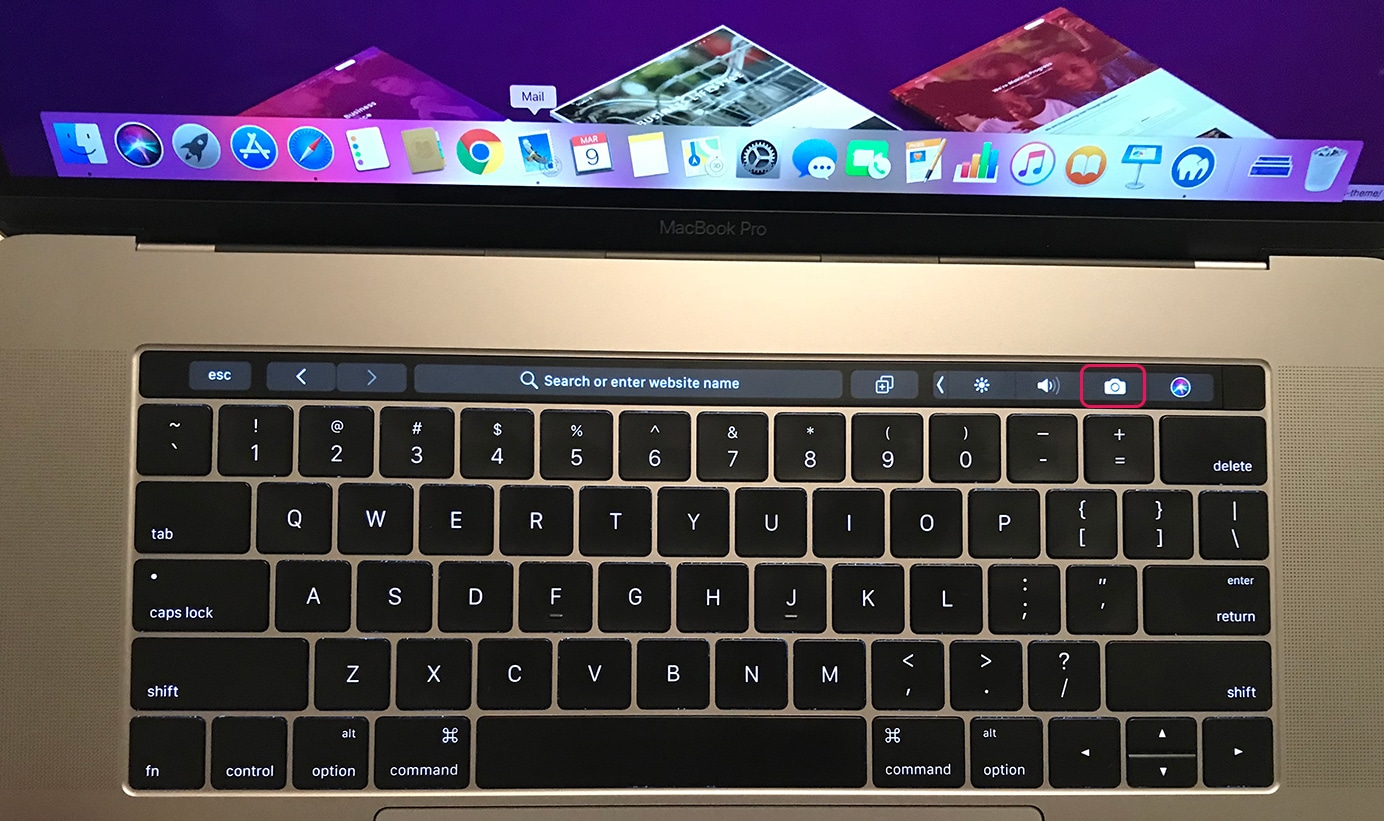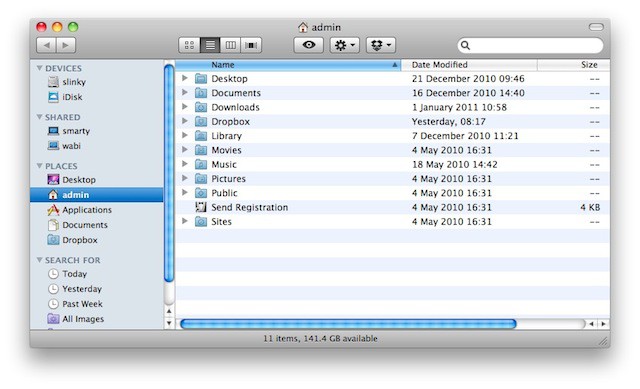Humanity should be grateful for the invention of Mac hotkeys. They probably saved us thousand years of time if put together. There is something addictive in using shortcuts - the quickness, the feeling of a keyboard, the geeky confidence in your fingers when you realize “hurray it works!” Once you get hooked on shortcuts, you’ll never go back to clicking again.
From MacOS, go to the Apple menu and choose “System Preferences” and then go to the. 10 incredibly useful Mac keyboard shortcuts you should be using. You’ll get a window that says Force Quit Applications and you can choose which app you want to close from there.
Basic Mac hotkeys combinations
1. Quit all apps
Sometimes an app that you thought you quit is still secretly running in the background. When your Mac lags and you need some fresh memory, you may choose to quit all apps. You probably heard of Force Quit (Cmd + Option + Esc), but it’s a too long way to do it.
Quit many apps in a row: Cmd + Tab
Then, holding down Cmd press Q to cycle between apps you need to close.
2. Delete a file completely

Dragging files to the Trash? Wait, this is not the only option. Here’s a shortcut to quickly delete unwanted files on a Mac, bypassing the Trash. Caution: there’s no way back.
To completely delete a file: Option + Cmd + Delete
Did you know, the Command key ? symbol was borrowed from a road sign that is used across Scandinavia? Its original use is to denote tourist attractions. Early Mac models had Apple key instead of Command, but it later was changed as Steve Jobs feared that there would be too many “apples” in the OS interface.
3. Copy and paste a screenshot directly
Cmd + Shift + 4 is an old classic way to make a screenshot on a Mac. But here comes the combination to take your screenshotting skills to the new level. Normally you would make a screenshot, pick it from your desktop, and only then paste it to the new location. It appears, all this time you could do it easier.
To copy-paste a screenshot: Shift + Control + Cmd + 4
4. Quickly switch to the desktop
Sometimes your screen is so obscured by windows it would take years to click through to the desktop. Thank goodness, there is a Mac keystroke combination designed for people like us: the folks who are drowning in an ocean of windows.
To remove window overload: Cmd + F3
5. Open Spotlight
Spotlight, your Mac’s internal search engine, can make your life 1000% easier. It finds files faster than Finder and intuitively predicts what are you after. To open Spotlight right on the spot (sorry for the pun), use this magic combo.
To launch Spotlight search: Cmd + Space bar
Cool shortcut keys for Mac
1. Invert display colors
A truly psychedelic key combination. This shortcut inverts all the colors on your Mac's screen to their opposites. Try it, and your world will never be the same. On the flip side, you can find a few practical applications for this command, for example, to adjust your screen to different lighting.
To invert colors on screen: ?md + Option + F5
2. Restore a recently closed tab
This one can be a real savior if you accidentally closed an important tab in a browser, like that pancake recipe or payment confirmation. There’s an easy Mac keyboard shortcut to restore it.
To restore a closed tab: Cmd + Shift + T
3. To shut down your Mac instantly
No, the following Mac shortcut is not about the force shutdown. It’s used when you need to quickly close all dialog windows and shut down your Mac in a legit way. Learn this one, quickly finish your work and finally go outside.
To quickly shut down a Mac: Control + Option + Command + Eject
4. Mac hot keys to invoke Siri
Among all Mac keyboard commands, this is the easiest. Since Siri’s arrival to macOS we got used to talk to Siri about weather and even ask her to play our favorite tracks on Mac. If you are using macOS Sierra or higher, you’ll enjoy the ability to summon Siri using just one hand.
To launch Siri: Cmd + Space bar
A shortcut to free up space on your Mac
Well, not exactly a shortcut, but indeed the quickest way to get more storage on your Mac.
Download CleanMyMac + Install + Click Smart Scan
This combination of actions will free up dozens of gigabytes of space taken by garbage: unwanted files, system junk, app leftovers, etc. CleanMyMac removes about 54 GB of junk on an average Mac. Try and see how it cleans your Mac.
CleanMyMac is available for a free download here.
Finder shortcuts
Finder is quite a resource-demanding tool. When you open a new Finder window it usually takes some time. For quicker access to your main destinations like Applications or Desktop, you can use the following shortcut combinations.
To quickly access Finder folders:
Cmd + Shift + A (for Applications)
Cmd + Shift + U (for Utilities)
Cmd + Shift + D (for Desktop)
Chrome shortcuts
Having hundreds of opened tabs in a browser has become a widespread syndrome nowadays. Closing tabs with a mouse is not only frustrating but also may freeze up your browser. Using a direct shortcut makes this job easy as a morning walk.
To close a current tab in Chrome: Cmd + W
To close a Chrome window: Cmd + Shift + W
To open a new Chrome tab: Cmd + T
Psychologists say you have to do something at least 3 times to put it in your long-term memory. Attach small sticky notes to the outlines of your Mac’s screen with 3 or 4 shortcuts you really want to master. Then, leave it all to your fingers.
Mac shortcuts for documents
1. Copy text without formatting
You want to copy a piece of the text, but the old formatting drags along with it. Now you spend more time formatting rather than actually creating a text. To strip the text from old styling, use the following Mac hotkeys combination. A very good one to stretch your fingers.
To paste text without formatting:
Hold down Shift + Option + Command and hit V
2. Paste special symbols and emojis
Probably this is the easiest documented shortcut key for a Mac. To enter special symbols, like those lamdas, tildas, and alfas, you need to press just one key. For instance, if you need to type a modified E, hold down the E key for one second and then choose among available variations that appear.
To enter an alternate character: Hold down the character key
To paste emojis in the text: Press Control + Command + Space
3. Enter a strikethrough text on a Mac
You won’t believe, but 8000 people are googling how to do a strikethrough text on a Mac everyday. Although some applications don’t support it, this combination well works in TextEdit and Word. Now you can use it in every second line to add some roughness to your writing.
To apply strikethrough formatting: Cmd + Shift + X
4. Quickly print documents
The next combination works for most apps that allow printing. You don’t need to figure out where the print dialogue is located in every case. Just memorize this quick combination and send your files to print from anywhere.
To invoke a print dialogue: Cmd + P
Mac shortcuts to delete many files at once
There comes a time when you need to do a spring cleaning on your Mac: sort out old garbage, move photos to an external drive, or clean up your old downloads. It is time-consuming and takes an immense willpower simply to start. But lucky you are: there are a few shortcuts to remove large heaps of files as quickly as if you had a machete.
To select folder contents: Cmd + A
To delete a group of files after selection: Cmd + Delete
To empty the Trash: Cmd + Shift + Delete
If you’ve got many files left after backing up, this will save you a good deal of time moving them to the Trash bin.
To save you from a headache, there are apps that will do the mundane deletion job in an instant. CleanMyMac is perhaps the most reliable one. It has a tool that specifically searches for Large & Old files on your drive for a quick cleanup. CleanMyMac is available for a free download. So, check it out.
This was our take on most useful keyboard shortcuts for Mac. Thanks for reading. Below you'll find a few more links about Mac and productivity.
These might also interest you:
macOS is a wonderful operation system. Unlike iOS, Apple allows all the customization options on the macOS. You can change the default browser and Mail app and make other changes to your preference. Among them, the ability to create custom keyboard shortcuts for macOS's most-used actions is my favorite addition.
Apple Shortcuts App For Mac
By default, macOS comes with most-essential keyboard shortcuts to improve your productivity. But there can be times when you want to access certain menus or functions such as Notification Centre or Do Not Disturb mode repeatedly and miss the absence of those swift keyboard shortcuts. Thankfully, you can always assign custom keyboard shortcuts for them.
The functionality doesn’t end here. You can also create keyboard shortcuts for third-party apps like Firefox, Pixelmator, and more.
In this post, we are going to talk about how to create custom keyboard shortcuts on Mac. I will explain how you can simplify your workflow by setting up custom keyboard shortcuts for macOS menu, functions, and third-party apps. Let’s get started.
Also on Guiding Tech
Top 7 Useful macOS Apps to Optimize Your Mac
Read MoreCreate Keyboard Shortcuts for Frequently Used Words and Phrases
This one is similar to iOS. You can create keyboard shortcuts forfrequently used words and phrases. I can’t emphasize enough how muchtime it has saved me over the years.

You can set keyboard shortcuts for email ID, home address, and otherphrases that you use frequently. Follow the steps below to set them up.

Step 1: Tap on the Apple logo at the upper left corner and open System Preferences.
Step 2: Navigate to Keyboard > Text.
Step 3: Tap on the ‘+’ icon at the bottom leftcorner and add the shortcut for the phrase. For example, you can type‘email’ in it and replace the phrase with your actual email ID.
You can create as many keyboard shortcuts that you like in the macOS. I have created keyboard shortcuts for special charactersincluding degree, rupee, and added a couple of my email addresses. Ican simply type ‘degree’ and macOS will replace it with the degreesymbol.
Free Applications Mac
Note: You can create a customkeyboard shortcut for email but don’t try to do the same for thepassword. Anyone using your Mac can access the Keyboard menu without anyauthentication. So, it’s not wise to create custom keyboard shortcutsfor passwords.Assign Keyboard Shortcuts for macOS Menu
As mentioned earlier, macOS comes with a ton of keyboardshortcuts to improve your productivity. But it doesn’t support all themenus and functions on the Mac. That's where Mac keyboardcustomization options come in. You can look at default keyboardshortcuts in Mac, remove them, and even assign new keyboard shortcutsfor other macOS menus.
Go through the steps below to set them up.
Step 1: Open Spotlight Search (use Command + Space keyboard shortcut) and type System Preferences in it.
Step 2: Go to Keyboard > Shortcuts.
Step 3: You will see a bunch of options on theleft side. You can take a look at assigned keyboard shortcuts. You candisable the keyboard shortcut for it and even double tap on it andassign a new keyboard shortcut.
In some options, you will see ‘none’ written on the sides. That means the system hasn’t assigned any keyboard shortcut to it, but you can add one based on your preference.

For example, you can go to Mission Control and assign keyboardshortcuts for Show/Hide Notification Center and Turn on/off Do NotDisturb mode.
macOS also allows you to add keyboard shortcuts for otherservices such as Pictures, Messaging, Files and Folder, Searching, Text,and Internet. For instance, I use Pixelmator to edit images. Instead ofselecting images and then opening them from the context menu, I can assign a keyboard shortcut for it.
Go to Services > Pictures > Open with Pixelmator Pro andassign a keyboard shortcut for it. Next time, just select the picturesthat you want to edit in the app and use the keyboard shortcut to openthem in the app and start editing.
Note: Don’t assign a keyboardshortcut that’s already enabled in the macOS. Try to use a uniquecombination of keys that don’t interfere with other keyboard shortcutson Mac.Also on Guiding Tech
Top 4 Amazing Tools to Capture Scrolling Screenshots on macOS
Read MoreCreate App Keyboard Shortcuts
Most Mac apps do come with keyboard shortcuts support out of the box. But it might not be enough for you as they don’t support keyboard shortcuts for every menu or function. In such cases, you can always create custom app keyboard shortcuts.

Step 1: Tap on the Apple logo at the upper left corner and open System Preferences.
Uninstall Applications Mac
Step 2: Navigate to Keyboard > Shortcuts > App Shortcuts and tap on the ‘+’ icon at the bottom left corner.
Step 3: You can either create a universal keyboard shortcut for all applications or go to a specific app.
Step 4: Now, you need to enter the exact name of the menu command you want to add. Add menu title and keyboard shortcut for it.
That’s it. You can now use the assigned keyboard shortcut in the appto access the relevant menu. Let me remind you again, be aware ofsetting a keyboard shortcut that may duplicate one that is already inuse by another system function or app if they conflict with eachother or fail to perform an action at all.
The last thing you want is to go to the trouble of setting up a key combination that ultimately fails to perform the action.
Also on Guiding Tech
#macos
Click here to see our macos articles pageQuickly Move Through Menus and Options on Mac
macOS offers the flexibility to customize and assign a keyboardshortcut to every menu and option on the OS. Go through the tricks aboveand customize the keyboard shortcuts you like and experience yourproductivity going through the roof. Are there any specific custom shortcuts you've created and would like to share them others? Mention them in the comments below.
Next up:Are you looking to improve your productivity on Mac? Read the post below to find the seven best Mac apps to stay organized.
The above article may contain affiliate links which help support Guiding Tech. However, it does not affect our editorial integrity. The content remains unbiased and authentic.Read Next7 Best Mac Apps to Stay OrganizedAlso See#productivity #keyboard
Did You Know
Apple Watch can be used to unlock your Mac.
More in Mac
Top 4 Ways to Fix Mac Desktop Icons Missing or Not Showing
